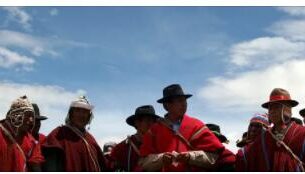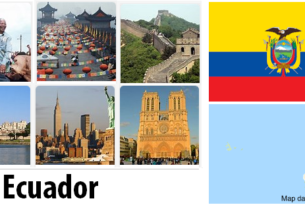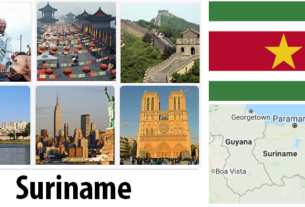Guyana is an independent state within the Commonwealth. Under the 1980 Constitution and the 1996 amendments, Guyana is a presidential-parliamentary republic. Administratively, the country is divided into 10 regions – Barima-Waini, Kuyuni-Mazaruni, Demerara-Mahaika, East Berbice – Corantein, Essequibo Islands – West Demerara (at the mouth of the Essequibo River, whose width is 34 km, there are islands comparable in area to island of Barbados), Mahaika-Berbice, Pomerun-Supenaam, Potaro-Siparuni, Upper Demerara – Berbis, Upper Takutu – Upper Essequibo. The regions are governed by the chairmen of the regional democratic councils, who are elected simultaneously with the parliament. Township and city councils are the governing bodies at the local level. Check diseaseslearning for political system of Guyana.
Large cities (thousand people): Georgetown, Linden (27.2), New Amsterdam (17.7).
Legislative power belongs to the unicameral National Assembly (65 members), 53 deputies are elected by proportional representation for 5 years, and 12 are appointed by the president from among well-known public and political figures as regional representatives. Speaker – W.Zefir. The interests of the regions are also protected by the National Congress of Local Democratic Bodies. These two political institutions form the Supreme Congress of the People, an advisory body to the government of the country, which has the right to discuss the actions of the president and put forward recommendations.
Executive power is exercised by the Cabinet of Ministers headed by the President and the Prime Minister. The head of state and government is the president, elected by universal direct and secret suffrage for a term of 5 years with the right of repeated re-election. The government is formed by the party that won the parliamentary elections. The President of Guyana, Bharrat Jagdeo, was elected in a snap election on March 19, 2001 (as was the new parliament). The Prime Minister is Samuel Hinds.
In the history of Guyana, an outstanding role was played by 3 extraordinary personalities – Caffey, F. Burnham (1923-85) and C. Jagan (1918-97), who ensured the achievement of the political independence of Guyana.
Guyana has historically developed a two-party system based on the “Westminster model”, represented by the NPP and the NNC, which have alternated in power since the introduction of general elections in the country in 1953. Both parties have undergone a complex evolution from the starting orthodox socialist positions towards more flexible approaches based on the perception of principles market economy, mixed forms of ownership, the primacy of human rights and the need for an open political system. Since 1992, the NPP has been in a permanent coalition with the Civil Movement (CIVIC), which unites entrepreneurial and intellectual circles. The Reform movement was formed in the NOC in 2000 (leader – S. Ming). The departure from the original multi-ethnic principles of the formation of parties led to the self-sufficiency of the ethnic factor in political life, which makes it difficult for Guyanese society to consolidate on a pluralistic basis and gives rise to mutual accusations between the NPP and the NOC of electoral fraud. In this regard, and in line with the constitutional renewal process that began in 1998, it was formed in May 2003 in accordance with an agreement between President Jagdeo and the leader of the NNK / R R. Corbin, the Commission on Ethnic Issues from representatives of religious communities, trade unions and business circles, children, youth and women’s organizations. This commission (along with the Ethnic Affairs Tribunal), as a constitutional body, is called upon to resolve issues of interracial and interethnic conflicts. Other parties include the United Force, the Alliance for Guyana.
Entrepreneurial organizations are represented by the Chamber of Commerce and Development, the Guyanese Industry Advisory Association, the Guyana Commodity Association, the Georgetown Chamber of Commerce and Industry, and others, united in the Private Sector Commission. The leading trade union organization is the Congress of Trade Unions of Guyana, which merged in 1993 with the Federation of Independent Trade Unions. Among other civil society organizations, the Committee of Action for Civil Liberties, the Council of Indian Organizations of Guyana, the Guyana Consumers Association stand out for their activity.
The armed forces of the country are the Guyana Defense Forces (as part of the Army, Coast Guard and Air Corps), the Guyana Police Force, the People’s Militia, and the Guyana National Service.
In foreign policy, Guyana seeks an active role in international relations, attaching particular importance to integration projects within the Caribbean Community and Latin American integration groups in general, given that it has long unresolved territorial conflicts with Venezuela, which claims 62% of Guyanese territory to the west of the Essequibo River, and with Suriname, which disputes the ownership of the territory between the New River and Kuruni (15 thousand km2) in the southeast of Guyana.
Guyana has diplomatic relations with the Russian Federation (they were established with the USSR on December 17, 1970).



